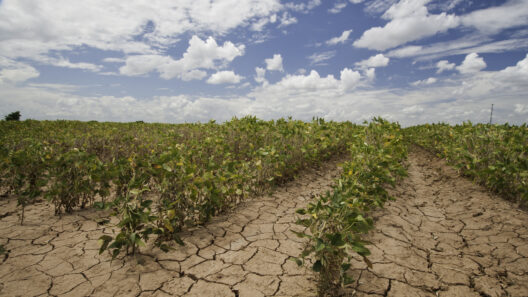Costa Rica, a small Central American country straddling the equator, is often lauded for its lush landscapes and verdant ecosystems. Indeed, this nation’s reputation as a haven of biodiversity is well-earned. The observation that Costa Rica manages to remain perpetually green and vibrant invites further contemplation. Beyond mere appearances, there is a plethora of ecological, geographical, and climatic factors that interlace to create a captivating narrative about this unique country. Understanding these factors unveils the many secrets behind Costa Rica’s enduring greenery.
One of the quintessential aspects of Costa Rica’s climate is its tropical nature, characterized predominantly by a significant amount of rainfall and mild temperatures. Nestled between the Pacific Ocean and the Caribbean Sea, the country is influenced by various weather patterns and ocean currents that contribute to its rich humidity. The topography of Costa Rica further complicates this narrative; its mountainous regions and expansive coastal areas create microclimates that can vary dramatically within short distances. Consequently, while one area may experience a deluge, another may bask in the warmth of the sun, exemplifying the varied climatic conditions throughout the country.
In general, Costa Rica experiences two distinct seasons: the dry season, known as “verano,” and the wet season, or “invierno.” This dichotomy encourages a lush, vibrant landscape that seems to thrive particularly during the rainy months, when precipitation bolsters the growth of foliage. The wet season typically lasts from May to November, resulting in an all-encompassing rejuvenation of vegetation. During this period, cloud forests come alive with a brilliant array of flora and fauna, while waterfalls cascade with a vigor that attracts both nature enthusiasts and researchers alike.
One striking feature of Costa Rica’s climate is its extensive network of rainforests, particularly in regions such as the Osa Peninsula and Tortuguero. These ecosystems act as vital carbon sinks, absorbing carbon dioxide from the atmosphere, and playing an indispensable role in climate regulation. The rainforests also contribute to soil fertility, which supports a diverse array of plant life. Consequently, the abundance of trees, plants, and animals not only fosters a rich environment but serves as a tangible reminder of the importance of ecological preservation.
The geographic disposition of Costa Rica also plays a pivotal role in maintaining its lush landscapes. The Costa Rican landscape is marked by mountains, volcanic terrains, and flat lowland regions, providing substantial opportunities for varying habitats. This varied topography allows for the formation of ecosystems that support an extensive array of biodiversity, making the country one of the most biologically diverse regions globally. For instance, the Central Valley, flanked by imposing mountain chains, creates an atypical microclimate that harbors unique species found nowhere else on Earth.
Fascinatingly, Costa Rica has embraced sustainable practices that further their commitment to preserving the environment. The government has implemented extensive conservation programs, including national parks and wildlife reserves that cover over 25% of the nation’s land area. These actions not only protect their swathes of verdant landscapes but also promote responsible tourism. This harmonious coexistence between humans and nature is a hallmark of Costa Rican ethos, encouraging visitors to appreciate nature without compromising its integrity.
Education and awareness have also been instrumental in cementing the environmental consciousness of Costa Ricans. Efforts in integrating environmental education into school curricula empower the youth to appreciate and protect their natural heritage. Community initiatives, such as tree-planting programs and wildlife preservation campaigns, further the cause of sustainability, fostering a sense of responsibility towards the environment at all societal levels.
Ultimately, the secrets behind why Costa Rica is always green intertwine seamlessly with its climatic, ecological, and socio-political dimensions. An elaborate tapestry of seasonal cycles, encouraging policies, geographic diversity, and community involvement culminate in a narrative characteristic of resilience and harmony with nature. The allure of Costa Rica lies not just in the picturesque landscapes, but in the deeper layers of commitment to sustainability and biodiversity that form its very foundation.
Costa Rica’s approach to environmental conservation serves as a model for other nations striving to balance development with ecological integrity. As we ponder the verdancy that blankets this enchanting country, we must remember that it is an intricate amalgamation of climate, geography, cultural practices, and a collective ethos oriented towards nurturing the planet. The secrets of Costa Rica’s climate and its unwavering greenery offer profound insights into the interconnectedness of nature and humanity, urging us to rethink our relationship with the environment on a global scale.




